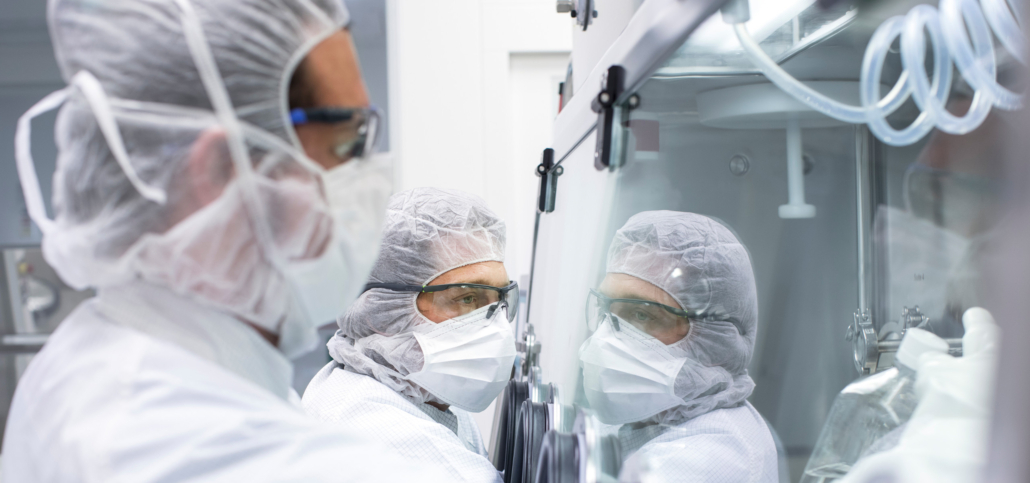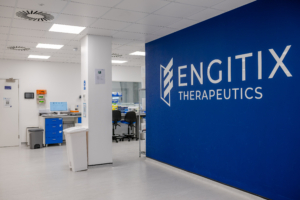
How to Safely Handle Your Antibody Drug Conjugate
ADCs have huge potential in treating challenging diseases such as cancer. However, it is essential that all necessary equipment, steps, and precautions are in place to en¬sure their safe handling.
Antibody drug conjugates (ADCs) have a highly specific mechanism of action, a distinct advantage in challenging oncology indications. But there is an additional layer of complexity when it comes to their manufacture: ensuring the safe handling of these highly potent and highly toxic substances.
ADCs are biological drugs that comprise a highly toxic payload joined to an antibody with a linker moiety. They are commonly treated as highly potent because of the toxicity of the payload, which is typically active at a very low dose. As a result, there are strict requirements for containment during their manufacture. For a CDMO, specialized in-house occupational toxicology and industrial hygiene expertise is essential to ensure the safe handling of the ADCs they are developing.
In a recent webinar hosted by Lonza, How to Safely Handle Your Antibody Drug Conjugate, experts from the multinational CDMO company explored the key factors involved in ensuring the safe handling of ADCs, including toxicological assessment, risk assessment, best practices for containment, and occupational hygiene monitoring.
Speakers for the event included:
? Dr. Friederike Hermann, Head of Occupational Hygiene and Biosafety at the Lonza site in Visp, Switzerland
? Lisa Wiesner, Occupational Toxicologist in the Corporate EHS Department of Lonza
? Dr. Selene Araya, Occupational Toxicologist in the Corporate EHS Department of Lonza
Lonza’s business model is designed to provide integrated services spanning drug substances to drug products, from feasibility studies to clinical trials and commercialization. Lonza supports small-molecule therapies across a range of customers, from virtual biopharmas to large pharmas, with the flexibility to meet specific program needs. In 2020, Lonza supported more than 350 active clinical trials and helped commercialize more than 275 APIs and intermediates; in the past five years, Lonza’s Small Molecules Division has supported 30 percent of small-molecule breakthrough designation launches. With its dual expertise in occupational toxicology and industrial hygiene, Lonza is able to support the safe occupational handling of antibody drug conjugates.
Antibody Drug Conjugates: Past, Present and Future
Because of their ability to directly convey anticancer payloads into the tumor space, ADCs might be described as the Trojan horses of the therapeutic armamentarium. The antibody is the part of the compound, with both high affinity and avidity toward the specific target antigen via its tumor antigen recognition sites. Affinity is the measure of the binding strength at a single binding site, while avidity is a measure of total binding strength. The antibody part represents the majority of the molecular weight of the molecule.
The payload is connected to the antibody using a linker. This is designed to give sufficient stability throughout systemic circulation, and then facilitate the efficient controlled release of the payload once it reaches the target cancer cells. This payload, also referred to as a warhead, is the part of the ADC with an anticancer effect. It is usually highly potent, as only a limited number of drug molecules can be attached to each antibody. The concept of ADCs is far from new. First conceptualized in 1913 by Paul Ehrlich, the work of developing experimental ADCs began 45 years later. The first clinical trial yielding positive results was conducted in 1983, and in 2001, Wyeth (later acquired by Pfizer) achieved market acceptance with the therapy Mylotarg® for acute myeloid leukemia. Several other ADCs are now on the market. Lonza carried out its first bioconjugation of an ADC in 2007 in its Potent Compound Plant (PCP). Since then, in its capacity as a CDMO, the company has been involved in more than 70 ADC projects, has made more than 750 cGMP batches, and has synthesized more than 12 different payloads.
In 2020, the ADC contract manufacturing market was expected to be worth about $812 million; this value is projected to reach $2.6 trillion by 2030, resulting in a compound annual growth rate of 12%. There are currently 12 ADCs approved around the world to treat hematological and solid tumor malignancies. Lonza has a significant role in the worldwide production of ADCs, as it is involved in the supply chain of the majority of commercial products.
The challenge inherent to cancer treatment lies in balancing the benefits of therapy with its burdens, resulting in a treatment that confers more good than harm. Standard chemotherapy, despite its high potency, is neither targeted nor selective, which often results in systemic toxicity. Monoclonal antibodies are also used to treat cancer and are capable of more targeted killing of cancer cells, and they are also less toxic. However, these therapies are often not sufficiently effective to destroy aggressive tumors. ADCs are able to overcome these limitations by combining the accurate targeting properties of monoclonal antibodies with the cytotoxic properties of chemotherapy, facilitating a wider therapeutic window. This leads to fewer unwanted side effects, due to a lower dose being required to provide efficacy, as well as less frequent dosing, a result of the longer half-life of ADCs.
These advantages can be attributed to the mode of action for ADCs. After entering systemic circulation, the ADC is designed to be stable until it reaches the tumor. The tumor cells express specific target antigens on their surface. As these are preferentially, or even exclusively, on the surface of tumor cells, it allows them to be targeted specifically by the ADC. Healthy tissue that does not express these antigens is usually unaffected by the ADCs.
After binding, the payload must penetrate the tumor tissue, and sustained release facilitated by the linker is key in this process. Once the ADC binds to the cell, it is internalized via receptor-mediated endocytosis. Lysosomal degradation and release of the payload then occur. Finally, the released payload triggers cell death by interfering with essential, direct-acting mechanisms, either with DNA or DNA-associated macromolecules. Interestingly, ADCs can induce tumor cell death also via the bystander effect, as the cytotoxic payload can diffuse across the cell membrane to neighboring cells, inducing their apoptosis.
Setting Health-Based Exposure Limits for ADCs
Lonza’s team performs key assessments to determine the potential risk involved in handling an ADC before practical work on a project commences. The first, a hazard assessment, is used to determine the occupational exposure limits (OELs) and respective occupational exposure bands needed to apply site-specific handling and safety measures. The hazard assessment is performed by characterizing the relevant toxicological and pharmacological properties of the ADC and its singular parts payload, linker, and antibody. This is then used to determine the OEL value for each of the compounds.
OELs are health based exposure limits (HBELs), which are determined based on an endpoint that is considered to be unlikely to cause an adverse effect on humans. The OELs are set for a specific target population; this might be a worker in the manufacturing facility, or a worker who is handling the compound at smaller scales, as is seen in an analytical lab. OELs are specific to the inhalation route of exposure. The exposure time is considered as time weighted average (TWA) for an average 8-hour working day over a 40-year working lifetime span.
OELs are based on a relevant safe dose for chronic exposure. An understanding of the possible pharmacological or toxic effects for workers is required in determining them; toxicologists are called upon to make reasonable predictions of hazards associated with exposures and to assess the impact of exposure on the human worker population. The determination of OELs meets the requirements from an EHS perspective to set a standard for safely handling highly potent drugs like ADCs.
Lonza uses one of two processes to determine the OEL value, depending on whether sufficient toxicity information (for example, repeated dose data) is available from the customer. The first approach is the default OEL, which is appropriate if insufficient information regarding toxicity has been communicated. The default OEL can be set for the whole ADC, as well as parts like the payload, linker, or antibody. The mechanism of action, structurally similar ADCs, and ADCs with the same payload can be compared in a read-across to determine their similarities and differences in activity, potency, and anticipated dosing schedules. This information is then considered to determine an a priori default OEL that is conservative given the current stage of development and limited study availability.
For the monoclonal antibody, inhalation bioavailability is expected to be low because of its high molecular weight, typically at least 40 kDa. An internal default OEL value is then assigned at this step of the project. This comparison process is also performed for the linker structure, as only limited toxicological study information is usually available for this type of compound. Endpoints like mutagenicity or potential developmental and reproductive toxicity (DART) effects that might have been reported are also taken into account to set default limits for linker structures.
An important consideration in default OEL settings are the potency differences between the free payload (small molecule) and the conjugated molecule (ADC, biologic). A typical potency difference of tenfold is usually considered for establishing default OEL values between the free payload and the conjugated molecule. This is associated with the molecular weight differences, as well as different physical-chemical properties and PK/PD differences. As an example, a default OEL as low as 5 ng/m3 is given for payloads from auristatin or pyrrolobenzodiazepine (PBD) class, with a limited toxicity data set. This would result in a default OEL of 50 ng/m3 for the whole ADC. The default assumptions are considered conservative, and the OEL value can be stated more precisely in the later stage of the project. Once more detailed preclinical or clinical information is available throughout the project stages, an OEL value can be calculated.
The second approach is the OEL calculation. In order to make the calculation, the critical effect will need to be determined, along with the highest dose at which adverse effects were not observed. This dose is then selected as a point of departure (POD) for OEL calculation. Several adjustment factors are selected to extrapolate from the safe dose, taking into consideration the pharmaco-toxic/kinetic-dynamic variability between species and among humans. The more uncertain the selected POD is, the higher the adjustment factors for the calculation will need to be. A composite adjustment factor (CAF) as high as 1,000 is usually considered inappropriate, as calculation approaches with high uncertainty should not be used to set an OEL value. For POD calculations, either information from nonclinical studies or if available from clinical studies can be taken into account.
Having the customer-specific data and information to adequately assess an ADC is critical. Lonza’s team uses these data to evaluate the drug-to-antibody ratio, how the antibody was designed, and how these factors affect its overall potency. As ADCs have become increasingly potent, evaluating their OELs has become both more important and more complex. Lonza’s internal banding system (AHSK) organizes potential exposure into six different categories, depending on the previously set OEL value and profile of the ADC. Payloads and toxins have a very low OEL, meaning that humans should strictly limit their exposure, while antibody and linker structures are typically less potent, and have higher OELs as a result.
Assessing Exposure Risk and Defining Containment
Once the hazard assessment is complete, Lonza’s in-house occupational hygiene expertise allows it to perform an exposure and risk assessment throughout the product’s development process, from the early preclinical stages through to commercial campaigns. These exposure risk assessments are used to determine the best approach to containment and how best to carry out occupational hygiene monitoring. Lonza’s standard OELs and typical clinical doses of ADC fall in the following ranges:
OEL
? Antibody range 20-1000 ?g/m3
? Linked range 10-1000 ?g/m3
? Payload typical 20ng/m3
? ADC often 1-10 ?g/m3
Dose
? Antibody 0.2-10 mg/d
? Linker 0.1-10 mg/d
? Payload 200ng/d
One way to visualize and contextualize these ranges is by picturing sugar crystals. Five of these weigh roughly one milligram, with each crystal equaling about 200 micrograms. The recommended dose of the payload, as described above, is 200 nanograms per day, or 1/1,000th of one sugar crystal a tiny fraction of it. The minuscule amounts of ADC, payload, linker, and antibody that represent maximum allowable exposure require Lonza to enact stringent safety measures if its teams are to remain within acceptable exposure ranges. In determining best practices for handling, the team must consider multiple factors. These include:
? The duration of the handling
? The mode of handling i.e., process, cleaning, troubleshooting
? The amount or quantity of substance
? The substance’s dilution
? The substance’s physical properties, including particle size and volatility.
The Lonza team examines every part of the process to determine which points of the process present the highest potential for exposure. Low exposure potential and high OELs would dictate that fairly normal containment protocols would suffice; conversely, high exposure potential and low OELs necessitate much more stringent containment. Process steps such as weighing payloads have both high exposure potential and low OELs, while transferring the payload in solution into a conjugation vessel presents comparatively little exposure potential. Thawing and pooling the antibody is typically considered a low exposure, high OEL step, as it is not handled as a dry powder, while handling the linker is also considered relatively low exposure and high OEL, despite frequently being used in dry powder form, because of its lower potency.
Lonza built its own facility for producing ADCs in 2007. This multipurpose plant, located in Visp, Switzerland, allows Lonza to deliver multiple ADCs to various customers. Its validated cleaning and high containment procedures, coupled with controlled access and cGMP production standards, make it a highly safety-focused facility. The facility employs a positive pressure cascade from the corridors to the production suites, high overpressure inside the suites, and very low pressure in the cleanrooms. The isolator operates under normal pressure conditions. The facility uses a negative pressure cascade for the handling of the payload, and a positive pressure cascade for the final conjugation. As a result, the end-to-end operation is entirely GMP compliant.
Industrial Hygiene Concepts: Monitoring Exposure
Industrial hygiene monitoring for ADC applications requires three types of samples to be collected. These are personal measurements, the gold standard for determining potential exposure to the worker; static samples, which help establish how successful a containment strategy is; and swab and wipe tests, which offer a holistic view of the contamination of the overall environment.
A high result in a wipe test does not correlate to high concentrations in the air. However, because of their relative sensitivity, swab and wipe tests can offer insights into how operators are behaving within the manufacturing areas. For new equipment, surrogate monitoring offers operators an idea of how well that equipment conforms to its occupational hygiene monitoring goals. Using a benign surrogate, such as naproxen, mannitol, or lactose, can help operators achieve this testing safely. This testing and monitoring should then be repeated with the API itself to account for potential differences in behavior from the surrogate.
The required detection limit of the analytical method depends on a number of factors; very low OELs require highly sensitive detection methods, for example. For an air sampling with a duration of 30 minutes, the normal sample collection rate is two liters per minute, while swabs require a surface area of one square decimeter. For both types of samples, the amount of solvent needed for elution is typically two milliliters; the sensitivity required is roughly 10 percent of the OEL or 10 percent of the surface limit. To check payload handling within the isolator, Lonza performed frequent monitoring, beginning with surrogate sampling and transitioning to frequent occupational hygiene monitoring. For its personal monitoring, everything measured has remained below the detection limit, or less than one nanogram per cubic meter. In accordance with European compliance standards (EN 689), operators must collect three samples that fall 10 percent or more below an established OEL; this ensures that workers are relatively safe, even if there are minor variations in protocols.
ADCs have huge potential in treating challenging diseases such as cancer. However, their manufacture is not a trivial process. It is essential that all necessary equipment, steps, and precautions are in place to ensure their safe handling, and that everything is carefully monitored. Only then can the safety of workers and patients alike be guaranteed.


 Photo from Giulia Bertelli on Unsplash
Photo from Giulia Bertelli on Unsplash  Engitix
Engitix Evotec SE
Evotec SE